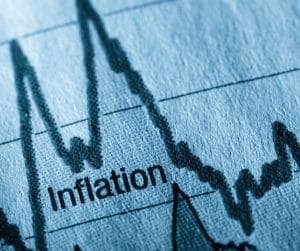7 Impacts Of The Federal Reserve’s Interest Rate Cuts
The Federal Reserve has recently announced a cut in interest rates.
In a landmark shift, the Federal Reserve has recently announced a cut in interest rates, a decision that marks a significant turn in the United States' monetary policy. This move comes after a period of heightened rates aimed at curbing inflation and stabilizing economic growth. Such a change not only signifies a response to current economic conditions but also sets the stage for a ripple effect across various financial sectors and the broader economy.
The significance of this decision cannot be understated. Interest rates, set by the Federal Reserve, are a primary tool used to influence economic activity. They directly affect borrowing costs for individuals and businesses, and indirectly influence spending, investment, and inflation rates. A cut in these rates typically signals a shift towards encouraging economic growth, particularly in times of economic slowdown or uncertainty.
Contents
Economic Stimulation Through Lower Borrowing Costs

The Federal Reserve's decision to cut interest rates is a strategic maneuver aimed primarily at stimulating economic activity. This move is grounded in a fundamental economic principle: lower borrowing costs can significantly encourage consumer spending and business investment.
Encouraging Consumer Spending: Interest rates have a direct influence on consumers' financial decisions. When the Fed reduces these rates, it essentially lowers the cost of borrowing money. For consumers, this translates into lower interest payments on loans and credit lines, making it more affordable to finance big-ticket purchases like homes and cars. Moreover, with lower rates on savings, individuals might find spending more attractive than saving, further fueling economic activity.
Boosting Business Investment: For businesses, reduced interest rates decrease the cost of capital. This cheaper access to funds makes it more feasible for businesses to undertake new projects, expand operations, or invest in research and development. Small businesses, in particular, stand to benefit as they often rely heavily on loans for growth. This surge in business activity not only aids individual companies but also contributes to job creation, a vital aspect of economic health.
Effect on Economic Growth, Especially in a Slowing Economy: In a context where the economy is showing signs of slowing down, a cut in interest rates can act as a much-needed stimulant. By making borrowing cheaper and spending more attractive, the Fed aims to counteract economic stagnation. This boost in spending and investment can help maintain or even increase the pace of economic growth, keeping the economy from slipping into a recession.
A Balancing Act: However, it's important to note that while lower interest rates can stimulate economic growth, they are not a panacea. The effectiveness of this strategy depends on various factors, including consumer confidence, global economic conditions, and underlying structural aspects of the economy. The Fed's challenge lies in striking the right balance – stimulating growth without leading to overheating or excessive inflation.
Stock Market Response

The Federal Reserve's move to cut interest rates has immediate and significant implications for the stock market. This decision often catalyzes a dynamic response from investors, influencing stock prices and investment strategies.
Impact on Stock Prices: Traditionally, when the Fed cuts interest rates, it can create a bullish sentiment in the stock market. Lower interest rates make borrowing cheaper for businesses, potentially boosting their profits and, by extension, their stock value. Additionally, lower rates tend to decrease the yield on fixed-income securities like bonds, making stocks more attractive by comparison. As a result, investors often shift their focus to equities, driving up stock prices.
Stocks vs. Other Investments in a Low-Rate Environment: In a scenario of reduced interest rates, the appeal of stocks often increases relative to other investment vehicles like bonds. Bonds and other fixed-income securities typically offer lower returns in a low-interest environment, leading investors to seek higher returns in the stock market. This shift in investment strategy can inject more capital into the stock market, further propelling stock prices upward.
Potential Risks of an Overheated Stock Market: While the initial response to interest rate cuts can be a surge in stock market activity, there lies a risk in an overheated market. An excessively buoyant stock market may lead to overvaluation of stocks, where their prices are driven more by liquidity and investment trends than by the underlying fundamentals of the companies. This disconnection between stock prices and corporate performance can create a bubble, which, if it bursts, can have significant repercussions for the market and investors. It's crucial for investors to remain vigilant and consider the long-term fundamentals of their investments, rather than getting swept up in short-term market exuberance.
Navigating the Shift: For investors, understanding the relationship between interest rate cuts and stock market dynamics is key. While the prospect of higher returns in the stock market is enticing, it's important to maintain a balanced and diversified investment portfolio. This includes considering a mix of stocks, bonds, and other assets, each responding differently to changes in interest rates.
Implications for Inflation

The decision by the Federal Reserve to cut interest rates carries significant implications for inflation, an essential factor in the economic equilibrium. Understanding the balance between stimulating economic growth and controlling inflation is crucial in assessing the broader impacts of this monetary policy shift.
Balancing Growth and Inflation: One of the Federal Reserve's primary goals is to maintain economic stability, which includes managing inflation levels. While lowering interest rates is aimed at boosting economic growth by making borrowing cheaper and encouraging spending, it also risks increasing inflation. More money circulating in the economy can lead to higher demand for goods and services, potentially driving up prices if supply doesn't keep pace. The challenge for the Fed is to stimulate growth without triggering runaway inflation.
Potential for Increased Inflationary Pressures: Interest rate cuts can lead to increased inflationary pressures, especially in an economy already operating near its capacity. In such a scenario, additional spending can outpace the economy's ability to produce goods and services, leading to price increases. This situation necessitates a careful monitoring of inflation indicators by the Fed to ensure that any growth stimulated by lower interest rates does not escalate into harmful inflation levels.
When Inflation Might Not Be a Primary Concern: There are conditions under which inflation might not be a primary concern following an interest rate cut. For instance, in a situation of economic downturn or recession, where consumer spending and business investment are low, a rate cut could serve to revitalize these activities without necessarily leading to immediate inflation. Similarly, if technological advancements or other factors are leading to increased productivity and supply, the economy might be able to absorb the increased demand without significant price hikes.
Effects on the U.S. Dollar and International Trade

The Federal Reserve's decision to cut interest rates extends beyond domestic economic dynamics, significantly impacting the value of the U.S. dollar and international trade. This monetary policy shift influences global financial markets and trade relationships, affecting everything from currency exchange rates to the operations of multinational corporations.
Impact on the Value of the U.S. Dollar: Lower interest rates typically lead to a decrease in the value of a country's currency. For the U.S. dollar, this devaluation occurs because lower rates reduce the yield on dollar-denominated assets, making them less attractive to foreign investors. A lower interest rate environment leads to less demand for the dollar, decreasing its value relative to other currencies. This shift in currency value has far-reaching implications for international trade and financial flows.
Consequences for Imports and Exports: A weaker U.S. dollar makes imports more expensive, as it costs more dollars to buy the same amount of foreign goods. This could lead to increased prices for imported products in the U.S., impacting consumer choice and spending. Conversely, a weaker dollar makes U.S. exports more competitive abroad, as foreign buyers can purchase more with their stronger currencies. This can benefit U.S. exporters by expanding their market reach and potentially increasing their sales volumes.
Implications for Multinational Corporations: Multinational corporations, which operate in multiple countries and deal in various currencies, are significantly affected by changes in the value of the U.S. dollar. These companies might experience increased costs for their operations in other countries due to currency conversion rates. However, they could also see increased competitiveness of their products in international markets. Additionally, the financial reporting of these companies can be impacted by exchange rate fluctuations, affecting their balance sheets and income statements.
The Housing Market’s Sensitivity to Interest Rates

The housing market is notably responsive to changes in interest rates, making the Federal Reserve's decision to cut rates a significant factor for both current and prospective homeowners.
Impact on Mortgage Affordability and Home Buying: Lower interest rates directly translate to lower mortgage rates, which can significantly reduce the cost of borrowing for home purchases. This reduction in mortgage rates makes home buying more affordable for a larger segment of the population. For those already owning homes, it presents an opportunity to refinance existing mortgages at lower rates, potentially leading to lower monthly payments or shorter loan terms. The increased affordability generally stimulates demand in the housing market, potentially leading to an increase in home prices as more buyers enter the market.
Caution Among Potential Homebuyers: Despite the attractiveness of lower mortgage rates, there can be a sense of caution among potential homebuyers, especially in times of broader economic uncertainty. If interest rate cuts are perceived as a response to impending economic downturns, potential buyers might be wary of making such a significant financial commitment. Concerns about job security, future income stability, and the overall health of the economy can temper the enthusiasm for home buying, even in a low-interest-rate environment. This cautious approach can lead to a slower-than-expected uptake in home buying, moderating the impact of lower rates on the housing market.
A Dual-Edged Sword: Thus, while lower interest rates can make home buying more accessible and appealing, the broader economic context in which these cuts occur plays a crucial role in shaping consumer behavior in the housing market. It is a dual-edged sword where the benefits of lower rates need to be weighed against the economic signals that prompted the rate cuts.
Consumer Debt and Spending

The Federal Reserve's reduction in interest rates has a direct and immediate impact on consumer debt, particularly those with variable-rate debts, and subsequently influences consumer spending patterns.
Relief for Consumers with Variable-Rate Debts: One of the most tangible effects of a reduction in interest rates is felt by consumers with variable-rate debts, such as credit cards, adjustable-rate mortgages, and certain personal and auto loans. As interest rates drop, the interest charges on these debts typically decrease, leading to lower monthly payments. This reduction can provide significant financial relief to consumers, especially those struggling with high levels of debt. For those with adjustable-rate mortgages, this change can mean more manageable housing costs, while for credit card users, it can translate into less interest accruing on their balances.
Increase in Disposable Income and Consumer Spending: The relief in debt payments effectively increases the disposable income of consumers. With more money available each month, consumers may feel more confident about their financial situation, leading to an increase in spending. This uptick in consumer spending can be a crucial driver of economic growth, as it stimulates demand for goods and services. Increased consumer spending can also lead to higher business revenues, which can further fuel economic activity through increased investment and job creation.
A Catalyst for Economic Growth: The boost in consumer spending, facilitated by the reduction in interest rates, acts as a catalyst for economic growth. It not only benefits individual consumers and businesses but also contributes to the overall health of the economy. This cycle of increased spending and economic growth highlights the interconnectedness of monetary policy, consumer behavior, and economic vitality.
Long-term Economic Health Considerations

While the Federal Reserve's decision to cut interest rates can provide immediate economic benefits, it is imperative to consider the long-term economic health implications. Key among these are the risks of asset bubbles and excessive debt accumulation, and the importance of maintaining a balanced approach to monetary policy.
Risks of Asset Bubbles: One of the potential risks associated with prolonged low interest rates is the formation of asset bubbles. Asset bubbles occur when the prices of assets, such as real estate or stocks, are driven to excessively high levels primarily due to easy borrowing rather than underlying economic fundamentals. These inflated prices can create an unstable market that is susceptible to a sudden collapse, which can have severe consequences for the broader economy. The challenge for policymakers is to foster economic growth through lower interest rates while being vigilant about the signs of overheating in asset markets.
Excessive Debt Accumulation: Lower interest rates can also encourage both individuals and corporations to take on more debt due to the lower cost of borrowing. While this can stimulate economic activity in the short term, it also raises concerns about long-term financial stability. High levels of debt can become burdensome and unsustainable, particularly if economic conditions change, such as a rise in interest rates or a downturn in the economy. The accumulation of excessive debt can pose significant risks to the financial system and the economy as a whole.
Importance of a Balanced Monetary Policy: These risks underscore the importance of a balanced approach to monetary policy. The Federal Reserve must navigate carefully, using interest rate cuts to stimulate economic growth and mitigate downturns, but also being mindful of the potential long-term consequences. This balancing act involves not only adjusting interest rates but also using other monetary and regulatory tools to ensure sustainable economic growth. It also requires monitoring economic indicators and being ready to adjust policies in response to changing economic conditions.
As we navigate through the complexities and opportunities presented by the Federal Reserve's decision to cut interest rates, it's crucial for individuals and investors to actively engage with the current financial environment.
Capitalizing on the Current Financial Environment: The current low-interest-rate environment presents a unique opportunity for investors. Traditional savings accounts and fixed-income investments might offer lower returns, making it an opportune time to reassess investment strategies. Diversifying portfolios and exploring different asset classes can help in maximizing returns while managing risks in this dynamic financial landscape.
Exploring Investment Opportunities, Especially in Bonds: One particular area worth exploring is the bond market. While lower interest rates often mean lower yields for new bonds, they also typically lead to an increase in the value of existing bonds. Additionally, different types of bonds, such as municipal or corporate bonds, might offer attractive opportunities depending on individual risk profiles and market conditions. Investors should consider the potential benefits of including bonds in their portfolios as part of a diversified investment strategy.
Personalized Financial Advice and Portfolio Review: Every investor's situation is unique, and navigating the investment landscape can be complex, especially in times of economic change. Therefore, I will like to invite you to book an appointment for personalized financial advice and a portfolio review. Whether you're looking to optimize your current investments, explore new opportunities, or simply gain a clearer understanding of how these economic changes affect you, a personalized consultation can be an invaluable step in securing your financial future.
As we conclude our exploration of the Federal Reserve's decision to cut interest rates, it's clear that the impacts of such a policy shift are both extensive and multifaceted. From stimulating economic growth and affecting the stock market to influencing inflation, currency value, and the housing market, the ripples of this decision touch nearly every corner of the economy.
Junwen Chen
My mission is to educate and empower people to design their lives so that they can live in abundance.
Let me partner with you, to design and nurture your dreams and ultimate life goals.
You May Also Like:

Ways To Earn Money

How To Save Tax Legally

5 Changes To CPF In 2025
Join our mailing list to receive the latest news and exclusive insights